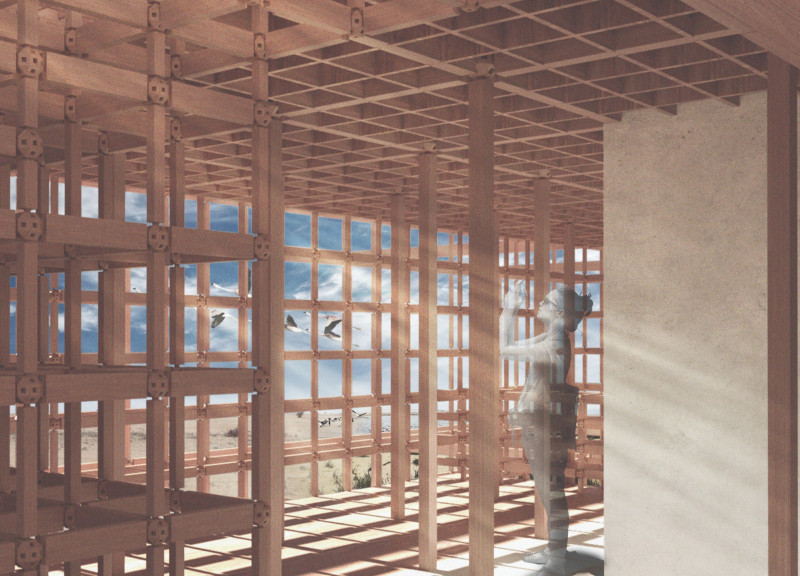5 key facts about this project
The design combines a careful connection between built form and nature. Located in an ecologically sensitive reserve, the center serves as a place for visitors to engage with the landscape. The overall concept revolves around a journey from the ground to the sky, inviting exploration while prioritizing environmental awareness and preservation.
Structural Framework
The structure employs a unique grid system that supports the local ecosystem's development. At its core is the Mashrabiya system, likened to a puzzle that enhances light management and spatial experience. The use of a rhombicuboctahedron joint enables various connections in three-dimensional space, ensuring both strength and adaptability in design.
Spatial Organization
Access is provided through a boardwalk that invites visitors into the building. The ground floor features an entrance and a gallery, introducing visitors to the local environment. On the first floor, an additional exhibition area and an observatory terrace offer expansive views of the landscape. On the second floor, a safety distance of 3.2 meters is maintained between visitors and native species, reinforcing the importance of conservation in the design.
Construction Methodology
Using a post-and-beam approach, construction connects wooden elements with a slide linkage system, avoiding the need for glue or nails. This approach highlights a blend of traditional craftsmanship and modern building techniques. The boardwalk mimics this structural integrity, creating an inviting outdoor experience that aligns with the building's aesthetic language.
Environmental Integration
A key feature is the wind tower, known as "Baragil," designed to provide passive cooling and enhance air flow. Its bracing system comprises diagonal elements paired with a concrete core, ensuring the building's stability in varying conditions. Inside, a structural grid allows for multiple viewpoints while also shielding visitors from direct sunlight, promoting comfort and connection to the natural surroundings.
Attention to detail in the design reflects a commitment to harmonizing architecture with ecology. The approach encourages close engagement with the environment while maintaining a strong focus on functional needs and visitor comfort.





















































